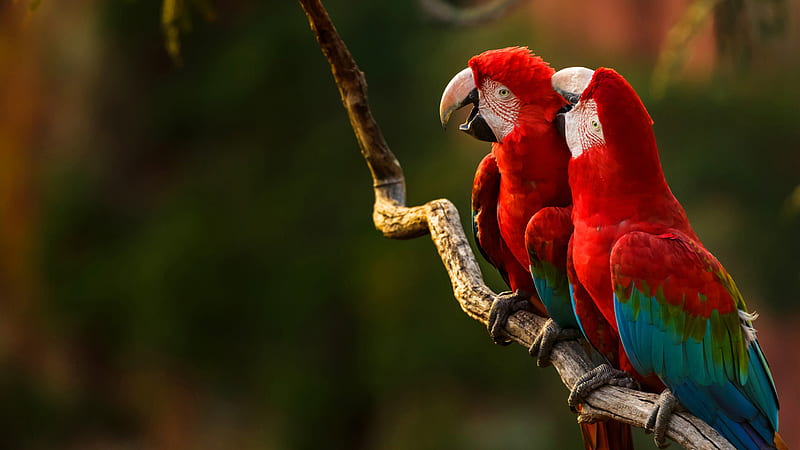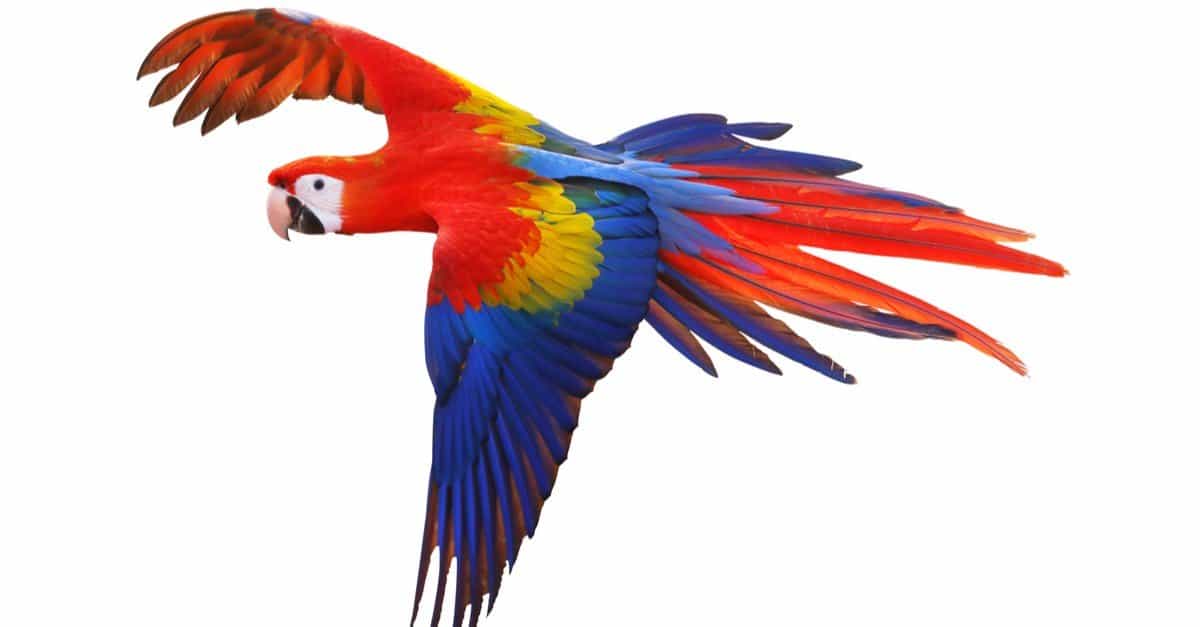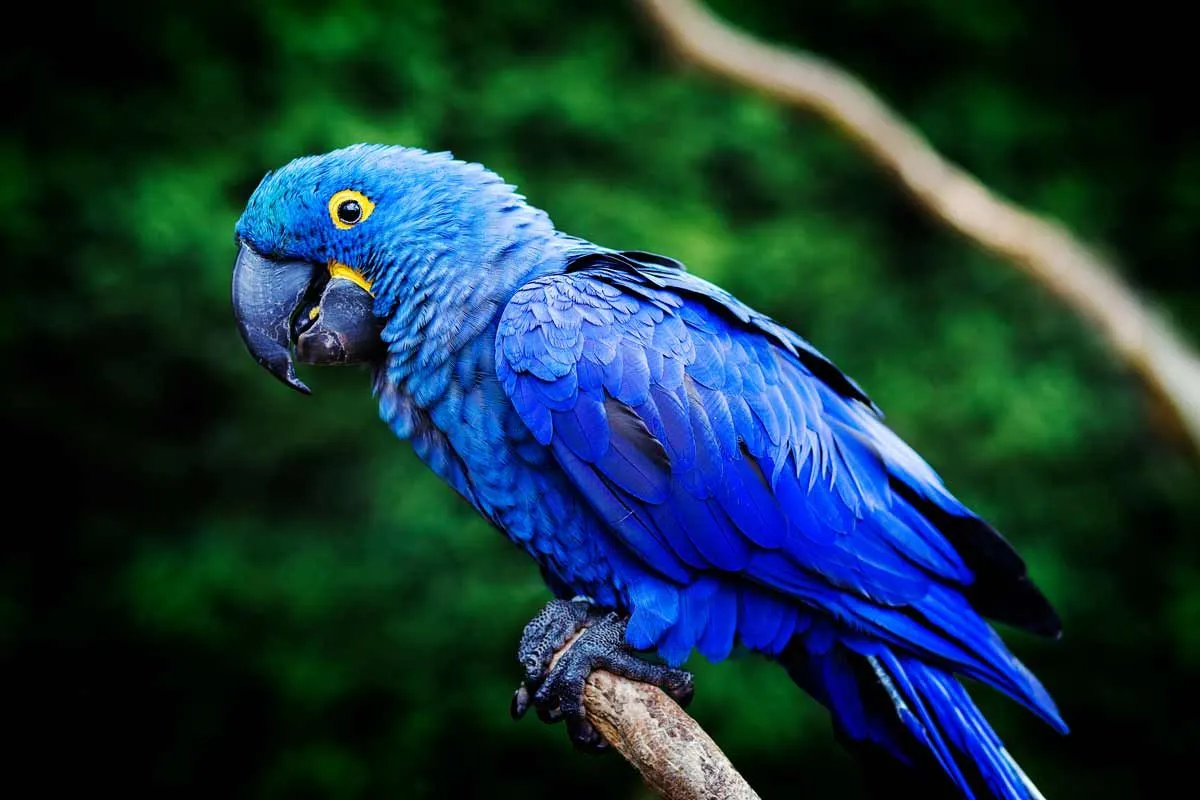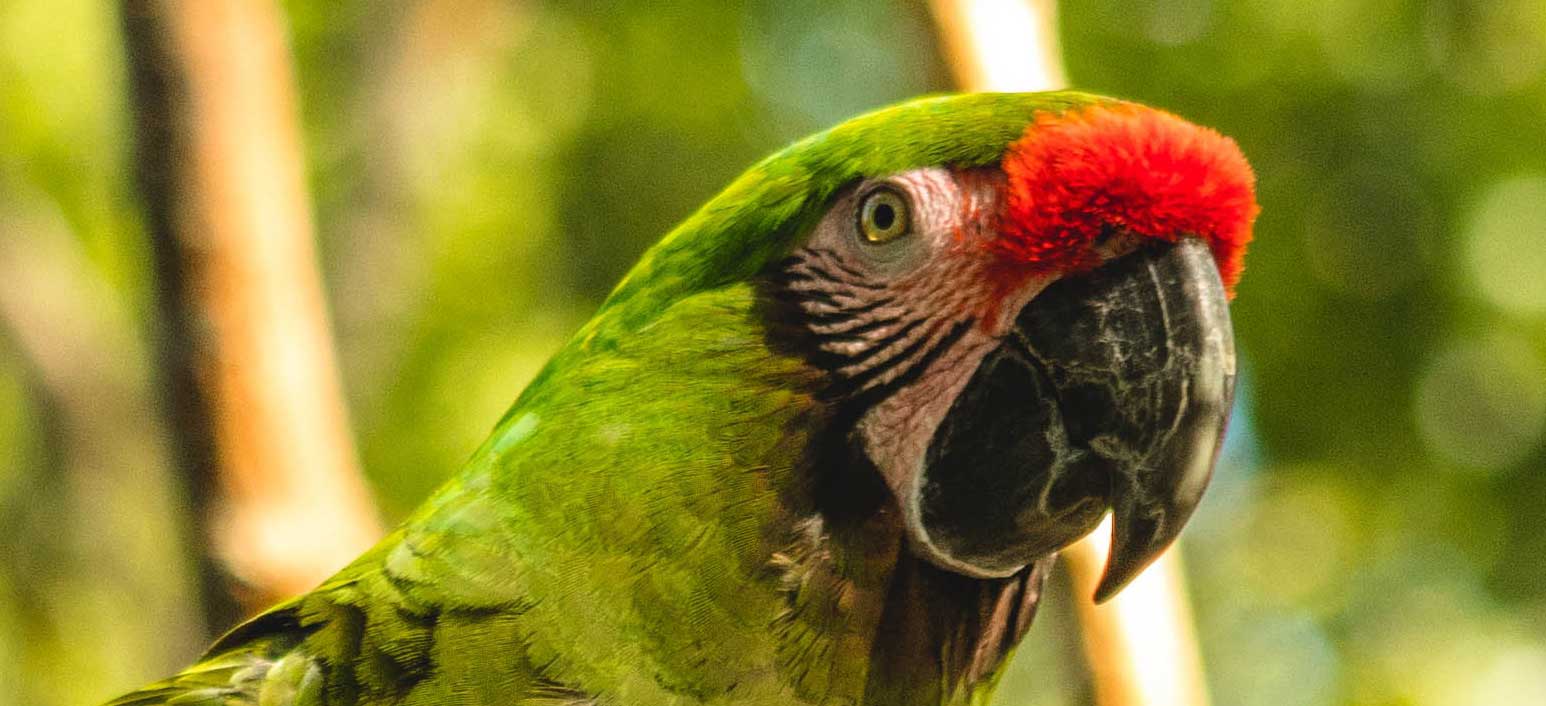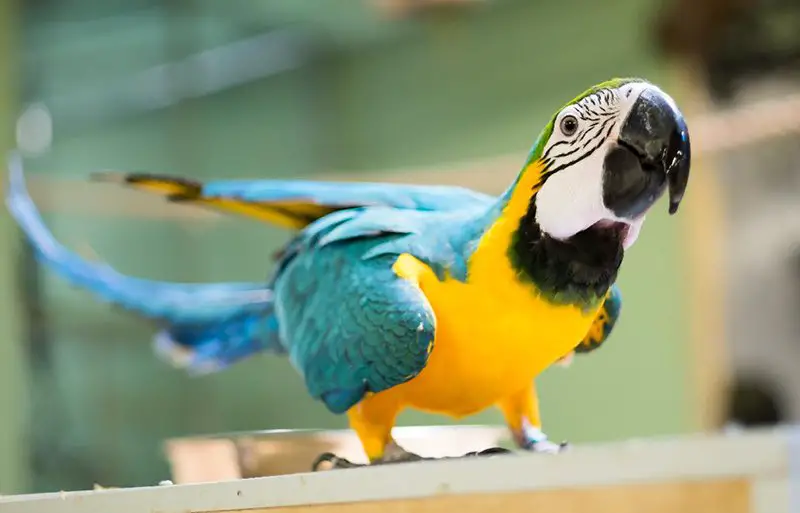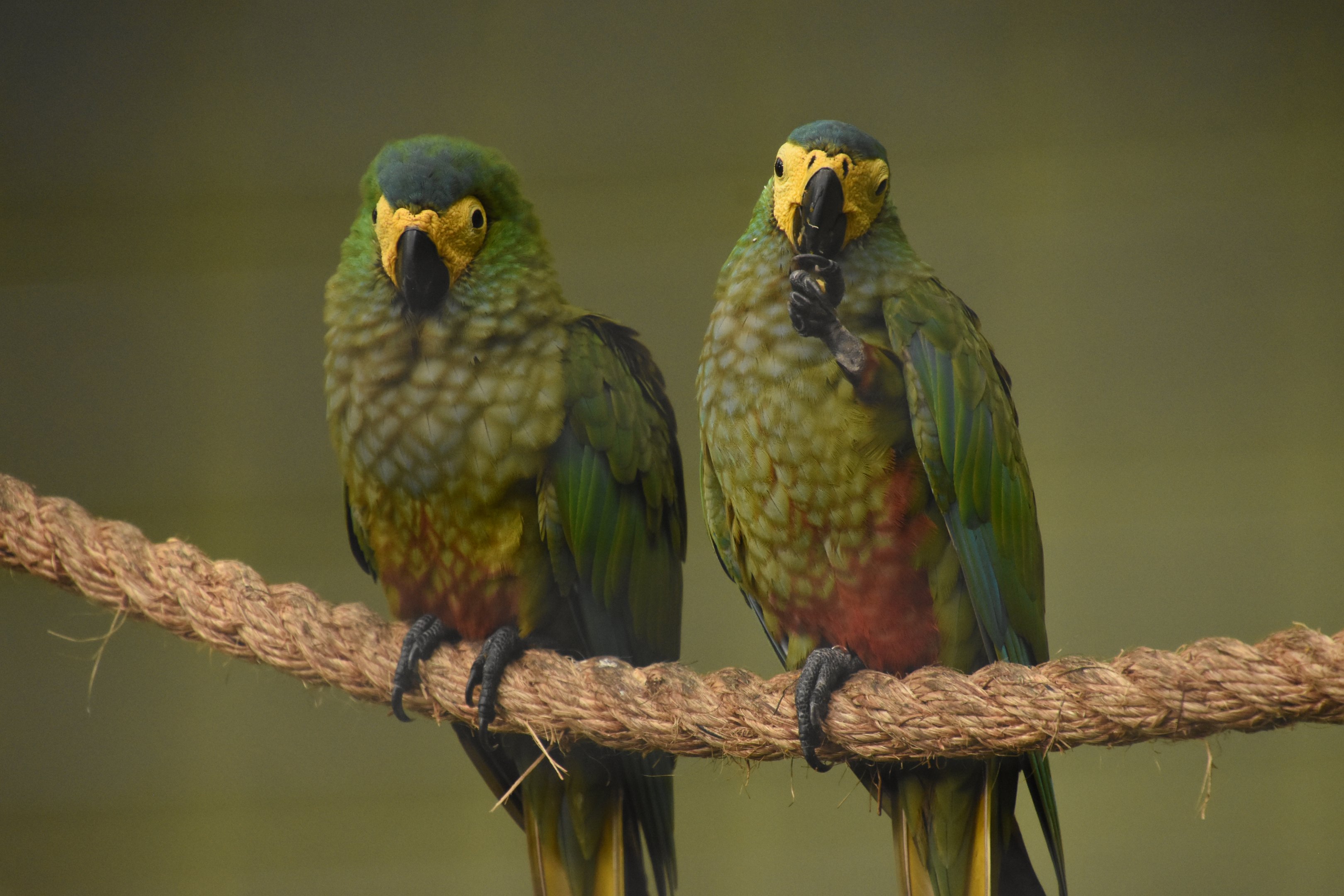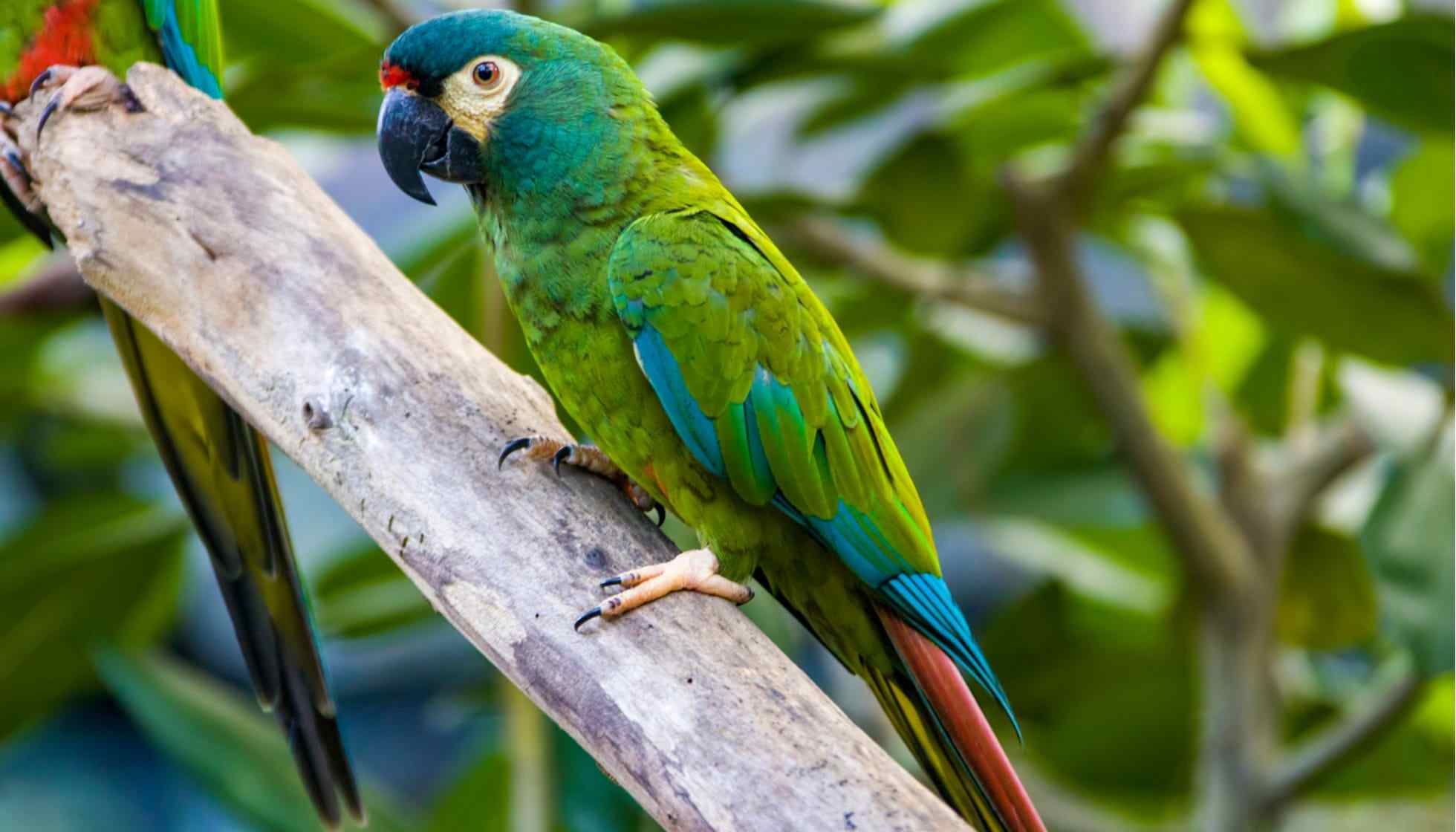Macaws Parrots:
Macaws are native to the Americas and are the largest species of a parrot there are different types of macaws parrots. macaws are native to the Americas and are the largest species of parrot. They can live up to 80 years in captivity.
The best-known macaw is Blue-and-Yellow Macaw, which is a Brazilian national symbol, along with the Pau Brasil tree.
There are many different types of macaws. In fact, they can be divided into two groups: the large macaws and the smaller macaws. The large macaws are typically green in color, while the small ones are usually red and blue.
There is also one type of small macaw that is yellow with a green head. Types of Macaws are below.
Types Of Macaws Parrots:
Red and Green Macaw:
The red and green macaw is a type of parrot. They are native to the tropical Americas, from Mexico to Brazil. This species is found in rainforests and dry forests.
The Red and Green Macaw can grow up to 43 inches long, with a wingspan of 70 inches. The males weigh about 2 pounds, while the females weigh about 1 pound. They have a slender curved beak with an orange or red tip that they use for eating seeds and fruit.
Scarlet Macaw:
The Scarlet Macaw is native to South America and can be found in Brazil, Bolivia, Paraguay, and Argentina. They live in lowland forests or wetlands but they prefer to live near water sources like rivers or lakes. The females are usually larger than the males and have a more pronounced red coloration on their heads.
They are known for their large size, bright colors, and beautiful feathers. Scarlet Macaws are one of the most popular types of macaws. A macaw is a type of parrot that can be found in the rainforest.
They are known for their large size, bright colors, and beautiful feathers. Scarlet Macaws are one of the most popular types of macaws. More Types of Macaws are below.
Red-Shouldered Macaw:
The Red-shouldered Macaw is native to the Amazon Basin in South America and is a member of the parrot family. It is a large, mostly red macaw with distinctive black markings on its wings.
Its head and neck are dark blue, and it has a light yellow beak. The Red-shouldered Macaw lives in groups of up to 10 birds. These groups are called “clans” or “flocks” that may join together for nesting or roosting.
Red-shouldered Macaws feed on fruits, nuts, and seeds from trees, palms, vines, and cacti; they also eat insects, small lizards, and frogs. They are usually found in lowland rainforests but can inhabit drier forests as well as man. Types of Macaws.
Spix’s Macaw:
The Spix’s macaw is a critically endangered species of parrot that is endemic to the Brazilian rainforest. It was first discovered in 1817 by German ornithologist Johann Baptist von Spix and his assistant, Carl Friedrich Philipp von Martius.
The Spix’s macaw was first observed in 1817 by two German ornithologists, Johann Baptist von Spix, and his assistant, Carl Friedrich Philipp von Martius.
By the 1980s, they were only found in an area of about 20 square kilometers (8 sq mi). In 1987 it became the first bird to be included on Brazil’s list of endangered species. Today, this beautiful bird is extinct in the wild due to habitat loss and capture for the pet trade.
Blue-Throated Macaw:
Blue-throated macaws are a type of parrot found in the Amazon rainforest. They are also called blue-winged macaws or blue-shouldered macaws.
The blue-throated macaw is a medium-sized bird with bright, green plumage and an iridescent blue throat patch. They have long tails, deep red eyes, and dark grey feet with black claws. Their wings are bright green with blue patches on their shoulders that make them look like they are wearing a cape.
The Blue-throated Macaw is the largest of the 20 different species of Macaw in the world. It is also one of the rarest among those 20 species, and this makes it even more valuable to collectors who want to own one for their collection. More Types of Macaws are below.
Hyacinth Macaw:
The Hyacinth Macaw is the largest aracari species. It has a total length of about 75-85 cm (30-33 in) and weighs approximately 2.5-3 kg (5.5-6.5 lbs).
The feathers are predominantly blue and turquoise, with a red forehead, upper chest, and rump patch that are visible when the wings are spread. The tail feathers are red-tipped with blue or black bands near the end of the tail.
The Hyacinth Macaw is mainly found in eastern Bolivia, northern Paraguay, and eastern Brazil; it has been extirpated from its range south of the Amazon River in Brazil and north of Rio Grande does Sul in Brazil’s state of Santa Catarina. More Types of Macaws are below.
Great Green Macaw:
The Great Green Macaw is a large, green, and long-billed bird.
The Great Green Macaw is a large, green, and long-billed bird. It has an average weight of 2.2 pounds (1 kg) and measures about 18 inches (46 cm) in length. The Great Green Macaw’s plumage is mostly green with a blue head and wings.
The feathers on its head are black with white tips that form a ring around the eyes. This species has black flight feathers that are pointed toward the tip of the wings to create a pattern of black dots on the underside of its wings as it flies from below.
Military Macaw:
The Military Macaw is a large, green parrot found in the rainforests of South America.
The Military Macaw is a large, green parrot found in the rainforests of South America. It has a heavy body and thick neck with blue facial skin around its eyes and orange patches on its cheeks.
The head feathers are dark blue and it has long, pointed tail feathers that are black-tipped at the end. Its beak is pale yellow with a black tip. More Types of Macaws are below.
Blue and Yellow Macaw:
Blue and Yellow Macaw is a very rare species of parrot that lives in the Amazon rainforest. It has blue feathers on its head, neck, and chest. The rest of its body is yellow. The Blue and Yellow Macaw is the largest macaw in the world, measuring up to 3 feet long from beak to tail. It can weigh up to 4 pounds.
There are two types of macaws, Blue, and Yellow macaws. The Blue and Yellow Macaw is a type of parrot that has a blue body with a yellow head and wings. These birds are native to South America and Central America.
The Blue and Yellow Macaw is one of the largest species of parrots in the world. They have a long lifespan of over 50 years.
Red-Bellied Macaw:
The Red-Bellied Macaw is a large parrot native to the rainforests of South America. They are also known as the Scarlet Macaw or the Red-shouldered Macaw.
The red-bellied macaw is a long-tailed, mostly green parrot that has a blue head and neck, white belly and rump, and a long pointed tail. Their beak is black with a yellow tip, and they have red around their eyes. The males are usually larger than the females and have more prominent markings on their heads.
Red-bellied macaws are arboreal birds that live in tropical rainforests in South America. They eat nuts, seeds, fruits, and berries found on trees; they will also occasionally eat small lizards or eggs.
Chestnut-Fronted Macaw:
Chestnut-Fronted Macaws are the largest of the macaw species. They are native to rainforests in Central and South America.
The Chestnut-fronted Macaw is a large, mostly green macaw with a yellow head and underparts, blue on its upper parts, and red on its tail feathers. It has a long tail and claws that are black or dark gray. The species is found in Brazil, Bolivia, Paraguay, Peru, Colombia, and Ecuador.
Chestnut-Fronted Macaws live in the canopy of tropical rainforests; they prefer tall trees with broad leaves for nesting sites. They eat fruits from trees such as palm nuts and figs as well as seeds from plants such as bananas and avocados.
Blue-Winged Macaw:
The blue-winged macaw is a long-lived species of parrot that can live for up to 60 years. The blue-winged macaw is the most arboreal species of macaw.
It spends most of its time on the tops of trees and does not often come down to the ground. The blue-winged macaw is also a very social animal and will often feed in groups.
The blue-winged macaw has an interesting mating ritual that involves two birds rubbing their heads together, as well as a process called “parading” where they fly up high into the air and then swoop back down together.
Golden-collared Macaw:
he Golden-collared Macaw is a large, predominantly red and yellow macaw that lives in the rainforest of Central America. It has a black head and neck, and blue or purple wings.
Macaws are native to the tropical rainforests of South America, Central America, Mexico, and northern parts of South-East Asia. They are mainly found in humid lowland forest regions where there is a high density of trees.
The Golden-collared Macaw can grow up to 20 inches long with an average weight of 3 pounds. The bird has a lifespan of up to 50 years in captivity.
Cuban Macaw:
The Cuban Macaw is a large bird found in the Caribbean. It has a bright blue plumage with a yellow head and neck. The Cuban Macaw is also known as the Blue-and-Yellow Macaw.
It is native to Cuba, Dominican Republic, Haiti, and Jamaica. This bird can be found in tropical forests and semi-deciduous forests. It usually lives in groups of 20 to 30 individuals that are led by a dominant male macaw called the alpha male macaw.
Cuban Macaws feed on fruits, nuts, seeds, and insects that they find on trees or on the ground such as ants, beetles, caterpillars, and grasshoppers. They also feed on the eggs of birds such as pigeons which are their favorite food source when they are available.
Blue-Headed Macaw:
The blue-headed macaw is a highly endangered species of macaw that lives in the rainforests of northern Bolivia.
It is a highly endangered species of macaw that lives in the rainforests of northern Bolivia. The blue-headed macaw is one of the most prized birds for collectors and has been hunted for its colorful feathers.
It live in small family groups. They are mostly monogamous and mate for life, but they have been known to have more than one mate during their lifetime. They are also social birds, which means they spend time together with other groups outside their own family group.
Blue-Headed Macaws eat mainly fruit, nuts, and seeds from trees, but they also eat insects and lizards.
